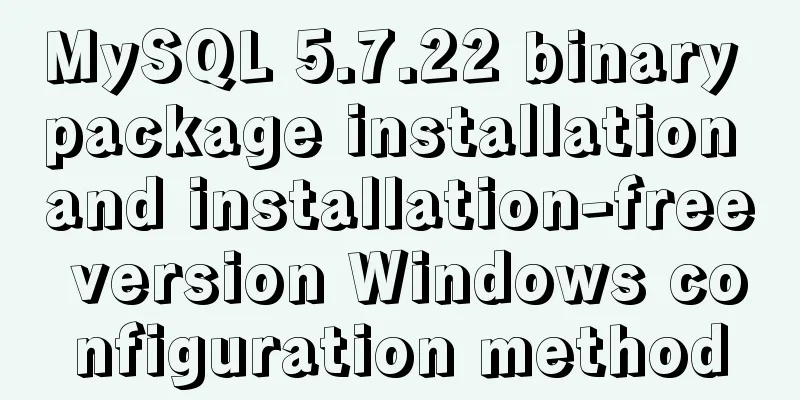DELL R730 server configuration RAID and installation server system and domain control detailed graphic tutorial

|
Recently, the company purchased a DELL R730 server, and I happened to find the following tutorial, so I would like to share it with you. CPU: e5-2609 v3 Memory 2*8GB Hard disk: 4*2TB Array card: H330, I forgot to take pictures of the installation rails and the rack, this has been installed in the cabinet.
First boot up and configure RAID When the CTRL+R screen appears on the startup interface, press CTRL+R
Go to the Virtual Disk Manager interface I forgot to take a picture here, I found this picture on the Internet First enter the VG MGMT menu (you can use CTRL+NT and CTRL+P to switch the menu here) Press F2 to expand the virtual disk creation menu
Select create new VD to create a new virtual disk
In the RAID LEVEL option, you can see the supported RAID levels. Depending on the number of hard disks, the display here will also be different. I have 4 2T hard disks and use RAID5. Select RAID5 here and press Enter to confirm.
After dividing into RAID5, the total size of the hard disk is still 6TB, and the size larger than 2TB does not support BIOS boot, so first divide it into a small disk to install the system. Check the disk to be added to RAID and enter the disk capacity in VD SIZE
The effect of RAID
Press CTRL+N to switch to the PD MGMT menu, and you can see that the disk status is ONLINE. There is no need to save here, just press ESC to exit and restart.
Next, let's install the operating system. I installed WINDOWS SEVER 2008 R2. Restart to this interface and press F10
Enter the Lifecycle Controller interface Select OS Deployment
The first item is to set up RAID first. Since it has been set up just now, select the option below and install the system directly. (DELL customers do not recommend setting up RAID here, so press CTRL+R when booting the computer and configure RAID in the Virtual Disk Manager interface.)
Select BIOS as the boot mode and select 2008 as the system
Check that there are no problems, click Finish and restart.
After restarting, start installing 2008server
This server is mainly used as a file server, so choose the Enterprise Edition for full installation. Be careful not to choose Server Core for installation. Everyone knows here, choose custom
After the installation is complete, you will see the familiar login interface. How to match the last time I configured RAID and installed the 2008SERVER system. This R730 server is mainly used as the company's file server and is used in conjunction with domain control. So here I will first talk about how to configure domain control. Why use domain control? Generally, small companies do not have many computers and do not need a domain controller; a workgroup can do the job. However, if an enterprise has more than 20 computers, using a workgroup to manage them will drive the administrator crazy. A domain controller can reduce a lot of burden on the administrator. For example, let’s talk about file servers, for file sharing. If employee Zhang San wants to access the shared data on the file server, the administrator needs to first create a user for Zhang San on the server, and then authorize this user. This is indeed very simple and convenient. But what if the company has other servers? Mail server, FTP server, ERP server, etc., then the administrator will have to create the user Zhang San on each server. If the company has 200 people, the administrator will go crazy. The root of all this stems from the decentralized management of workgroups, which runs counter to the high efficiency required by large networks. The domain controller is designed with resource sharing issues such as user accounts in mind, so as long as one server in the domain has an account established, other computers can share the account, which makes things much easier. In addition, domain control can also perform policy management, such as unified computer desktops, unified software releases, etc. There are too many advantages. Therefore, most companies use domain control for management. Setting up a domain controller is very simple: Start - Run Enter dcpromo to open the AD service installation wizard
The second method is to install AD domain controller by selecting Role-Add Role in the Service Manager.
The two methods operate basically the same, and the first method is mostly used by default. First, perform a compatibility check, and then press Next by default.
There was no forest or domain before, select Create a new domain in a new forest Some large group companies will have multiple domains. If you already have a domain server and want to join this one to the same forest, you can choose the first option.
Enter a company's domain name. Use your company's own domain name here. I am using this for testing, please don't blame me for copyright infringement.
Select the forest functional level. Generally, there is only one domain controller, so select 2008. If you want to set up multiple domain controllers in this forest, you must be careful. After selecting 2008, this forest cannot manage 2003 domain controllers.
Check DNS configuration The prerequisite for domain control is to configure DNS. You can install DNS first and then install domain control. I usually configure them here together.
Check and find that the server does not have DNS service installed, so let's install DNS now
It is recommended to keep the default values for these directories. If you are not familiar with domain control, it is best not to modify them at will. Set a restore password. I usually use the same password in case I forget it. Check if there are any problems Start installing and configuring domain controller Installation complete, it's that simple, restart.
After upgrading to a domain controller, press CTRL+ALT+SHIFT to log in.
When logging in, it is different from the workgroup. The domain name 2345test\user name we set must be added in front.
Take a look at our domain: 2345test.com
At this time, you can see that there are more AD Management Center, AD Users and Computers and other programs
Now find a client to join the domain First, set the client's IP address. DNS must be set to the domain server's IP address 172.1.1.1
Click Change Computer Name and enter the server domain name 2345test.com
When joining a domain, you must enter the domain administrator's password Welcome to join After restarting and logging in, I found that I still had to press CTRL+ALT+SHIFT Log in and select the domain 2345TEST The client is also joined to the domain When I have time later, I will continue to write about configuration files server and more functions of domain controller. This R730 server is mainly used as the company's file server and is used in conjunction with a domain controller. So here I will first talk about how to configure domain control. Why use domain control? Generally, small companies do not have many computers and do not need a domain controller; a workgroup can do the job. However, if an enterprise has more than 20 computers, using a workgroup to manage them will drive the administrator crazy. A domain controller can reduce a lot of burden on the administrator. For example, let’s talk about file servers, for file sharing. If employee Zhang San wants to access the shared data on the file server, the administrator needs to first create a user for Zhang San on the server, and then authorize this user. This is indeed very simple and convenient. But what if the company has other servers? Mail server, FTP server, ERP server, etc., then the administrator will have to create the user Zhang San on each server. If the company has 200 people, the administrator will go crazy. The root of all this stems from the decentralized management of workgroups, which runs counter to the high efficiency required by large networks. The domain controller is designed with resource sharing issues such as user accounts in mind, so as long as one server in the domain has an account established, other computers can share the account, which makes things much easier. In addition, domain control can also perform policy management, such as unified computer desktops, unified software releases, etc. There are too many advantages. Therefore, most companies use domain control for management. Setting up a domain controller is very simple: Start - Run Enter dcpromo to open the AD service installation wizard
The second method is to install AD domain controller by selecting Role-Add Role in the Service Manager.
The two methods operate basically the same, and the first method is mostly used by default. First, perform a compatibility check, and then press Next by default.
There was no forest or domain before, select Create a new domain in a new forest Some large group companies will have multiple domains. If you already have a domain server and want to join this one to the same forest, you can choose the first option.
Enter a company's domain name. Use your company's own domain name here. I am using this for testing, please don't blame me for copyright infringement.
Select the forest functional level. Generally, there is only one domain controller, so select 2008. If you want to set up multiple domain controllers in this forest, you must be careful. After selecting 2008, this forest cannot manage 2003 domain controllers.
Check DNS configuration The prerequisite for domain control is to configure DNS. You can install DNS first and then install domain control. I usually configure them here together.
Check and find that the server does not have DNS service installed, so let's install DNS now
It is recommended to keep the default values for these directories. If you are not familiar with domain control, it is best not to modify them at will. Set a restore password. I usually use the same password in case I forget it. Check if there are any problems Start installing and configuring domain controller Installation complete, it's that simple, restart.
After upgrading to a domain controller, press CTRL+ALT+SHIFT to log in.
When logging in, it is different from the workgroup. The domain name 2345test\user name we set must be added in front.
Take a look at our domain: 2345test.com
At this time, you can see that there are more AD Management Center, AD Users and Computers and other programs
Now find a client to join the domain First, set the client's IP address. DNS must be set to the domain server's IP address 172.1.1.1
Click Change Computer Name and enter the server domain name 2345test.com
When joining a domain, you must enter the domain administrator's password
Welcome to join
After restarting and logging in, I found that I still had to press CTRL+ALT+SHIFT
Log in and select the domain 2345TEST
The client is also joined to the domain
When I have time later, I will continue to write about configuration files server and more functions of domain controller. This is the end of this article about DELL R730 server configuration RAID and installation of server system and domain control. For more relevant DELL R730 server configuration content, please search 123WORDPRESS.COM's previous articles or continue to browse the following related articles. I hope everyone will support 123WORDPRESS.COM in the future! |
<<: HTML weight loss Streamline HTML tags to create web pages
>>: Use of MySQL truncate table statement
Recommend
JavaScript example code to determine whether a file exists
1. Business Scenario I have been doing developmen...
How to clear floating example code in css
Overview The framework diagram of this article is...
Implementation of css transform page turning animation record
Page turning problem scenario B and C are on the ...
Summary of MySQL commonly used type conversion functions (recommended)
1. Concat function. Commonly used connection stri...
Use Javascript to develop sliding-nav navigation plug-in with sliding bar effect
Table of contents 1. Introduction 2. Usage 3. Dev...
Summary of some common configurations and techniques of Nginx
Preface This article lists several common, practi...
How to solve the problem that the software package does not exist when installing software in Linux
When the software package does not exist, it may ...
Mini Program to Implement Simple List Function
This article example shares the specific code of ...
How to create scheduled tasks using crond tool in Linux
Preface Crond is a scheduled execution tool under...
Import backup between mysql database and oracle database
Import the data exported from the Oracle database...
Tutorial on installing mysql5.7.36 database in Linux environment
Download address: https://dev.mysql.com/downloads...
The difference between char, varchar and text field types in MySQL
In MySQL, fields of char, varchar, and text types...
Vue computed properties
Table of contents 1. Basic Examples 2. Computed p...
GDB debugging MySQL actual combat source code compilation and installation
Download source code git clone https://github.com...
Example code for implementing WeChat account splitting with Nodejs
The company's business scenario requires the ...






















































































